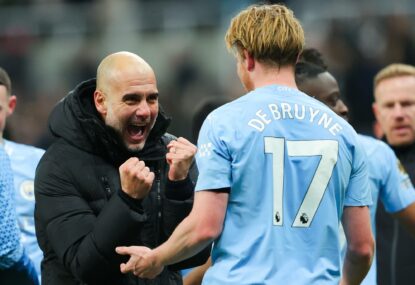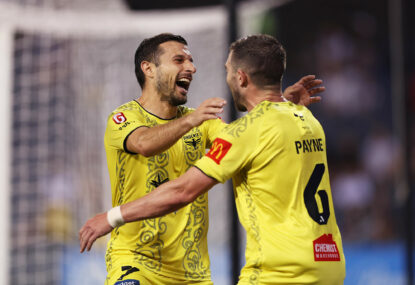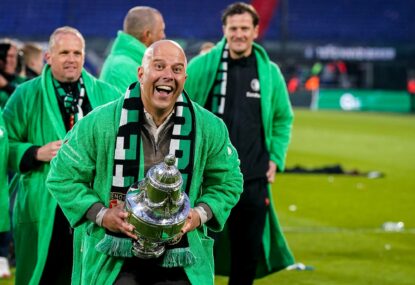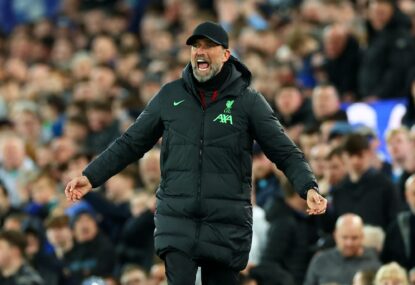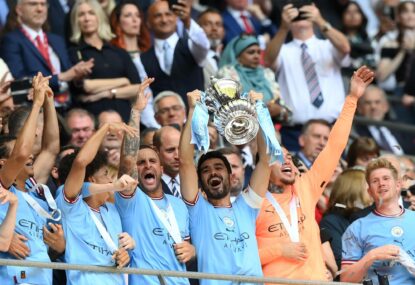The curtains are gradually closing on yet another exhilarating campaign of Victorian football. While the league season has customarily been at the forefront of fans’ attention, this year we’ve seen the introduction of cup football.
The Mirabella Cup has been praised by football fans around the state, with cup football being in recess since 2004, when Green Gully Cavaliers took at the Dockerty Cup competition.
Former NSL champion Melbourne Knights locked horns with Northcote City, a club who has risen to prominence since their championship season in 2009, where they won the Stage League One division.
The finale at the amphitheatre of Victorian football, AAMI Park, was a wonderful occasion where Northcote City prevailed 2-0 to lift the inaugural Mirabella Cup trophy.
Currently, the Mirabella Cup is the largest cup competition to surface in Australia, with almost 200 teams electing to participate in the innovative tournament. Talk has been ongoing in relation to a prospective nationwide cup competition – the FFA Cup – although no agenda has been set at present.
FFV president Nick Monteleone was buoyant about the prospect of there being a nationwide competition in the near future. Monteleone believes that the relative state federations have a thorough part to play if the FFA Cup is to come into fruition.
With 10 A-League outfits, a round of 32 for the main FFA Cup draw appears to be the most feasible option. Thus, 22 clubs plying their trade under the state branches would be given the opportunity to star on the elite stage.
One of the major objectives is to unify supporters of the more traditional clubs – in the vein of – Melbourne Knights, South Melbourne and Sydney Olympic – to the mainstream football market, while also allowing the sentiment of community football being aligned with the elite football tier, the A-League.
As we’ve witnessed in the Mirabella Cup, the component of cup football is an exclusive contingent. While the respective league divisions are commonly the major attraction, the allure of cup football does contain its significant advantages.
I’ve conducted a review, showcasing some of the highs, as well as the elements that could be improved for the future instalments of the Mirabella Cup:
Highlights
1. Widespread exposure for the grassroots game. While publicity for community football can be vastly improved, it’s a step in the right direction.
2. Fairytale scenarios come to fulfilment. Cobram Victory’s notable dream run was one of the major highlights of this year’s edition. Triumphing over Whittlesea Zebras and FC Clifton Hill, to ultimately reach the Final 12 – facing renowned VPL outfits, Melbourne Knights at Knights Stadium – was a magnificent tale that will long be remembered.
3. Regional Victoria plays an integral part, with Ballarat Red Devils and Cobram Victory proceeding to the Final 12.
4. The excitement, tension and drama of knockout football are evident throughout the Mirabella Cup. No second chances.
5. The opportunity for clubs to test their temperament, skills and fortitude against outfits in different division and surrounding is only apparent in cup football. Supporters love to embrace the underdog tag.
Constructive analysis
1. The FFA’s involvement in the cup was unacceptable. Initially, the FFV had gained permission to allow A-League affiliates – Victory and Heart – to compete in the competition.
In an unprecedented turn of events, the FFA prohibited the Victorian A-League affiliates from participating halfway through the competition. Ben Buckley’s justifications were that it may undermine the prospective FFA Cup, and that the landscape of football has significantly changed since the competition’s inception.
The FFA must stop thinking from a fiscal perspective; yes the FFA wouldn’t have gained much revenue from the competition, but it would have gained support and exposure in the community, which would in turn lead to growth in the code.
2. A more concentrated effort needs to be implemented for exposure of the Mirabella Cup. I applaud the FFV for their continuous efforts to improve the game and cultivate the sport.
With minimal mainstream publicity for the tournament, the FFV should help themselves in creating awareness in the wider community. Initiatives to encourage fans to the final are a great example.
Allocating free tickets to all junior players within the state would engage the football community with the pinnacle events on our football calendar. With the Mirabella Cup Final played on a Saturday afternoon – when all the State, Provisional and Metropolitan leagues play – it blocks the football community from attending.
It is understood that AAMI Park availability was limited due to Melbourne Storm, although hopefully this can be rectified next year.
3. With the Semi-Finals being played at neutral venues, double-headers could give fans more of an incentive to attend, and increase gate receipts, instead of diluting support at different venues.
The Mirabella Cup has been a wonderful addition to the Victorian football calendar. I’ve thoroughly enjoyed covering the competition since its announcement in February, all the way through to the Final at AAMI Park on September 10.
I look forward to next year, as we endeavour to see the Mirabella Cup develop and continue the traditions of the Dockerty Cup.
Courtesy of Goal Weekly – Follow Robert on Twitter @RobertDiFabio





























































































